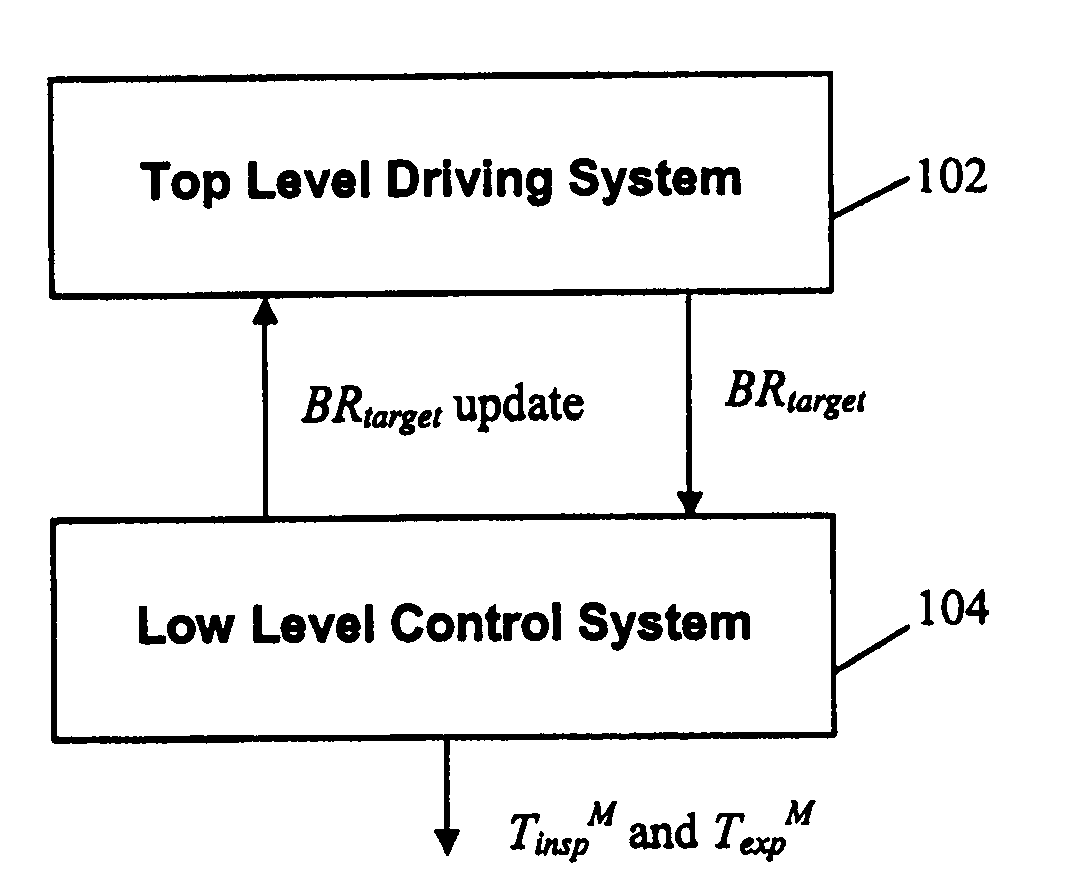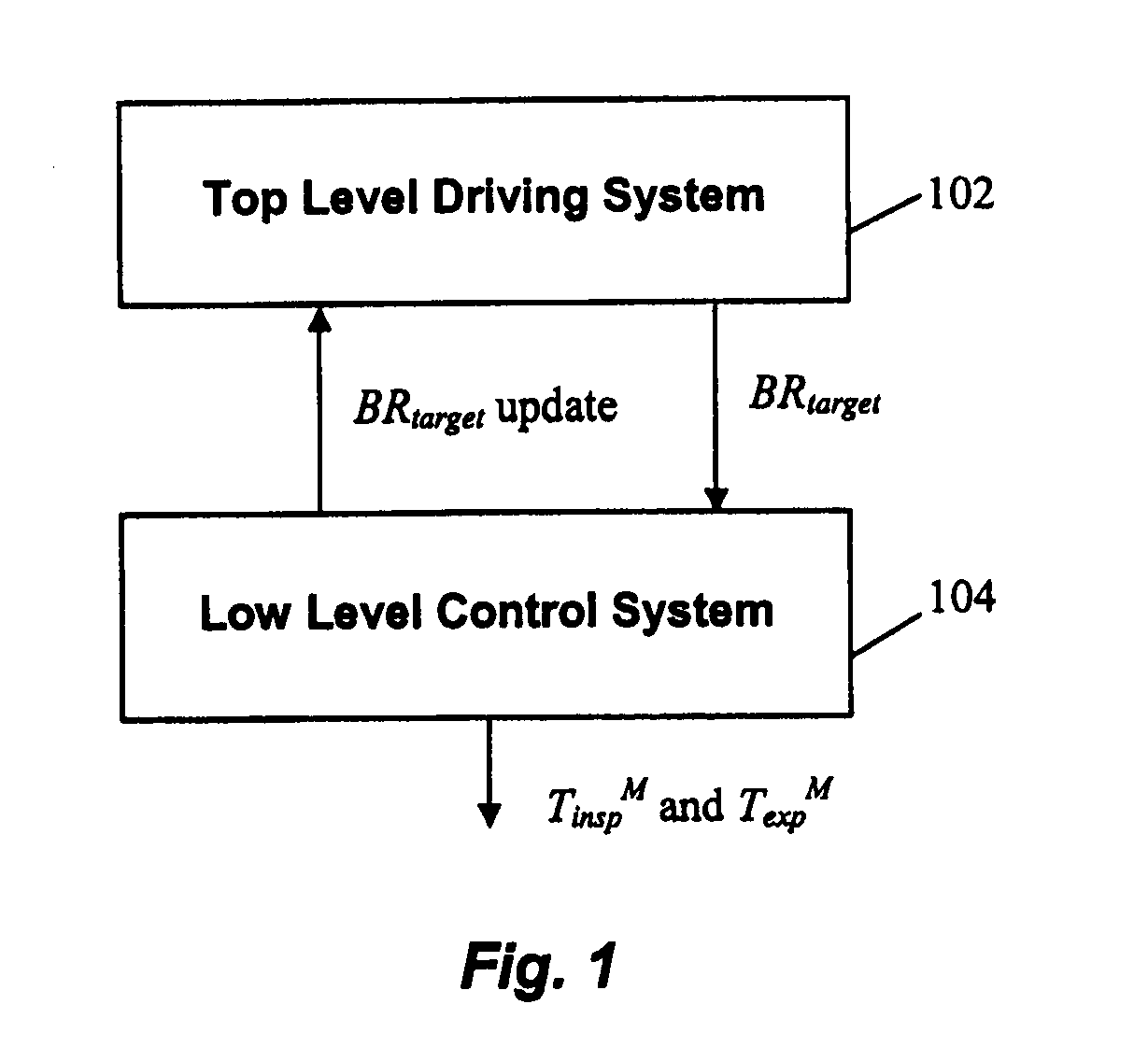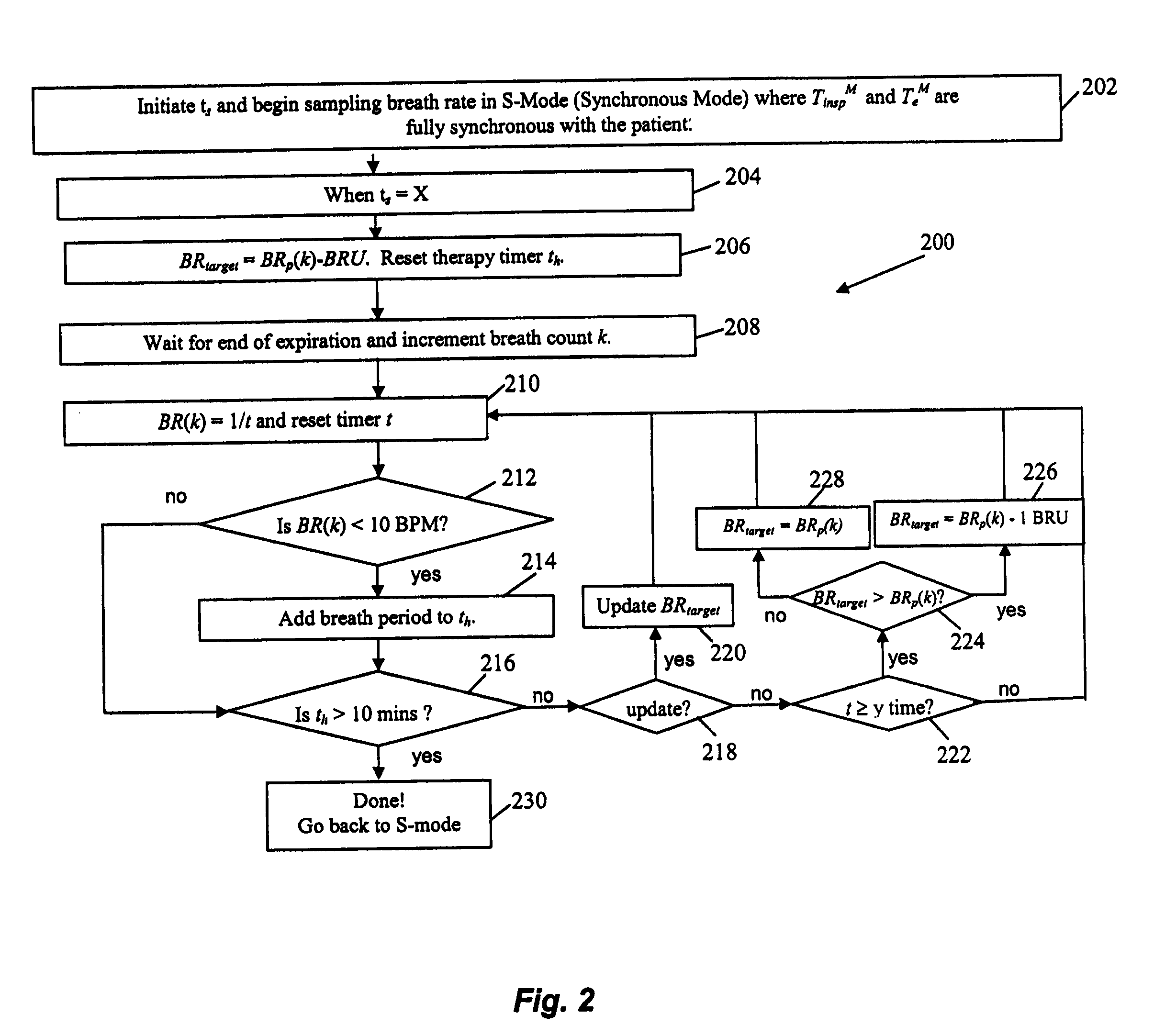Systems and Methods for Controlling Breathing Rate
- Summary
- Abstract
- Description
- Claims
- Application Information
AI Technical Summary
Benefits of technology
Problems solved by technology
Method used
Image
Examples
case b
[0075 of FIG. 4B illustrates when {circumflex over (T)}inspM(k)>Tinsp(k). In this case, TinspM(k)={circumflex over (T)}inspM(k)=2.5 secs, and Tinsp(k)=2.0 secs. Note that the effect is that the patient will be provided IPAP HI pressure for a longer period of time as illustrated in the graph. Finally, case C of FIG. 4C illustrates when {circumflex over (T)}eM(k)e(k). In this case, TeM(k) equals {circumflex over (T)}eM(k)=3.5 secs and the machine will initiate another inspiration period before the patient will actually initiate inspiration.
[0076]Note that the essence of the LLCS is to choose between two possible frequencies f1 or f2 on a breath-by-breath basis. The variable f1 is defined by the patient's breath rate (see cases A and B of FIGS. 4A and 4B,) and f2 is defined as a fixed lower frequency determined by fixed ratio (R) (as shown in case C of FIG. 4C.)
[0077]When the preset frequency f2 is chosen, the patient's breath rate f1 is slower than the device's current target frequenc...
PUM
 Login to View More
Login to View More Abstract
Description
Claims
Application Information
 Login to View More
Login to View More - R&D
- Intellectual Property
- Life Sciences
- Materials
- Tech Scout
- Unparalleled Data Quality
- Higher Quality Content
- 60% Fewer Hallucinations
Browse by: Latest US Patents, China's latest patents, Technical Efficacy Thesaurus, Application Domain, Technology Topic, Popular Technical Reports.
© 2025 PatSnap. All rights reserved.Legal|Privacy policy|Modern Slavery Act Transparency Statement|Sitemap|About US| Contact US: help@patsnap.com



